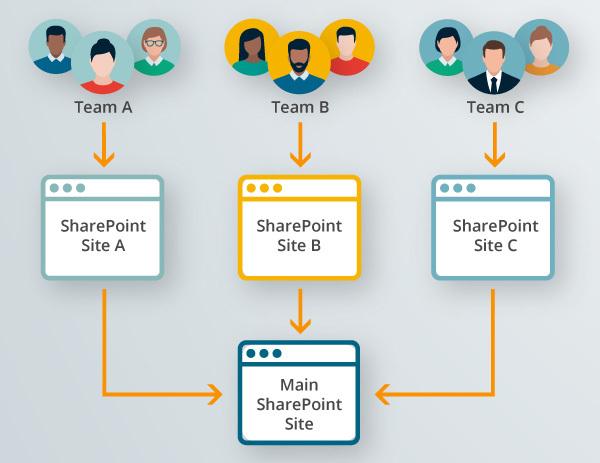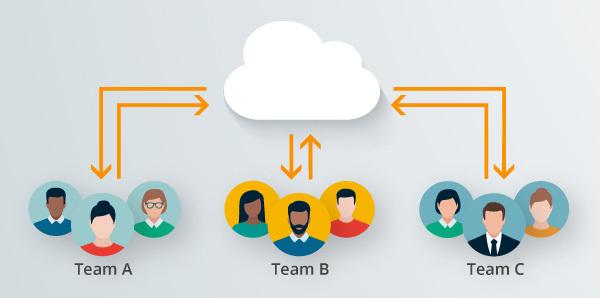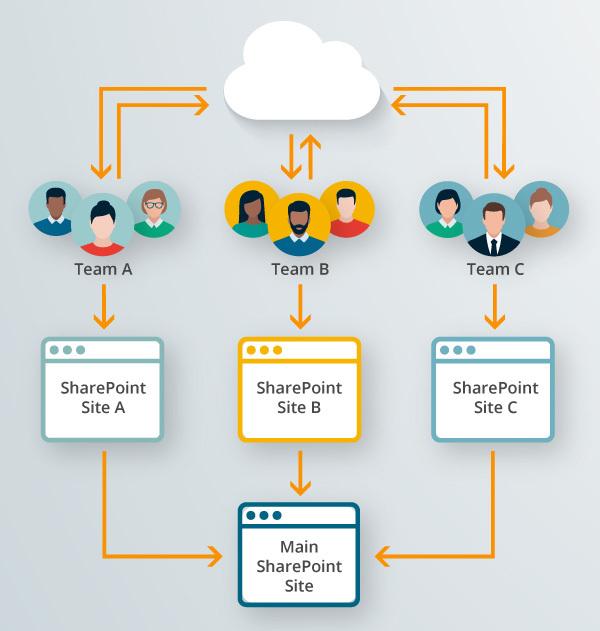SharePoint and digital asset management
| August 24, 2020

We get a lot of questions when talking to customers in the initial prospecting faze. A popular one is: ‘How is SharePoint different from digital asset management (DAM)?’ Here’s where the confusion comes from: SharePoint can store, organize and share digital assets and has some basic DAM functionality like storing documents in its library. So, do I need a DAM if my organization is already using SharePoint? The simple answer is yes – SharePoint can’t substitute a DAM, but they can complement each other.
There are many benefits to a DAM that SharePoint doesn’t have. Coupled with the full potential of a DAM system, SharePoint is transformed into a better, more compatible system. In this article, we’ll discuss the differences between SharePoint and DAM and look at how an integration brings even more functionality.
What is SharePoint?
SharePoint is a collaboration platform that integrates into the Microsoft Office suite. According to Microsoft: “You can use it as a secure place to store, organize, share and access information from almost any device. All you need is a web browser, such as Internet Explorer, Chrome or Firefox.”
What is digital asset management?
Digital asset management (DAM) systems enable you to store digital assets and assign metadata to your library of images, videos, presentations, logos, documents and other brand assets for better searchability. There are many other features to a digital asset management system like prevention of copyright infringement and quick distribution of content.
What’s the difference?
SharePoint is needed for narrow use cases. Specifically, its primary use is to create websites and manage information. Digital asset management is far broader and can be used in any place where the managing and sharing of digital assets is necessary.
Here’s what both DAM and SharePoint systems do effectively:
- Sharing and linking assets
- Versioning
- Administrative capabilities with user-type definitions
- Uploading and downloading files
Here’s what DAM can do effectively but SharePoint needs configuration or is limited in:
- Creating workflows
- Creating metadata
- Ingesting multiple file types
- Performing actions on asset batches
- Creating unique ID codes for digital assets
- Making advanced search capability
- Generating a taxonomy based off of metadata
Workflows for SharePoint and digital asset management
How does SharePoint work
SharePoint creates pages and subpages that can be used by teams. The SharePoint Site or SPS is the place where you and your team can collaborate as well as share and access information. We’ve created a diagram (see below) that shows you how your users could use the SPS and shows interdepartmental collaboration.

As the diagram illustrates, each team accesses their SPS and can pull from the company SharePoint Site. It’s also possible for the teams to access the other teams’ SPS. The SharePoint, when used this way, acts as a much lighter version of DAM.
How digital asset management works
Digital asset management software works differently and streamlines the process by providing one central location for the assets. Below is a diagram that illustrates this.

As you can see, a digital asset management system – like Canto – keeps all assets in one central collaborative place, simplifying workflows and optimizing brand consistency. Assets uploaded into Canto have metadata added and are categorized accordingly.
How SharePoint and digital asset management work together
We offer an integration of Canto and SharePoint and with it you can enjoy the benefits of both SharePoint and digital asset management. These systems work in tandem to streamline your team workflows and performance. Our diagram below shows this.

As you can see, the integration allows teams to use Canto as a central location for their assets while enabling them to use the SPS simultaneously. There are no duplicates, metadata remains close to the assets – and you’ll always share the most up-to-date version of the asset with your team. It’s the best of both worlds.
When do you need SharePoint without a DAM integration?
If you need a system to collaborate on smaller projects with limited functionality then SharePoint should be suitable. But this is for teams that don’t use large files or maybe work on few projects.
When do you need a DAM without SharePoint?
The benefits of digital asset management are far more comprehensive than SharePoint alone. If you need more functionality like quick and easy sharing, central storage for large assets, streamlined workflows, digital rights management and fast distribution then you need a digital asset management system. The real question is, then, do you need SharePoint still? Well, if you don’t want to work within the SPS anymore and want to create a different workflow then you can use a DAM without SharePoint. Keep reading if you want to use SharePoint with your DAM.
When would you need a SharePoint integration with a DAM?
If you want to keep your SharePoint workflows and work within the SPS for your project, but want to have a more powerful central location for your assets, then a DAM and SharePoint integration is a good fit.
Final takeaways
Now that you know the difference between digital asset management (DAM) and SharePoint, and how an integration enhances SharePoint, you should be equipped to enhance your SPS and DAM workflows.
